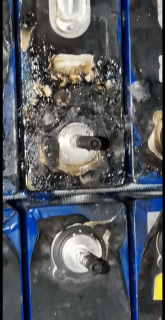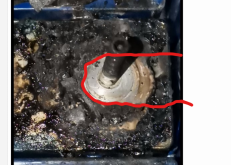Hedges
I See Electromagnetic Fields!
- Joined
- Mar 28, 2020
- Messages
- 20,514
Tank looks pretty small in relation to valve. What area/volume is it good for?
Halotron LC50 (4 hr.): 3.2% (effective concentration of extinguishing agent is higher than this)
Leave the room if it goes off.
Is that an "environmental friendly" "mercury based valve"?
I doubt it contains mercury - maybe they used the word to mean "temperature".
The extinguishing agent may work best if there is a moat around what you plan to have catch fire for containment.
A friend got a small Halon extinguisher. When he spilled oil while adding to his car, it flowed down to mud-caked hot exhaust pipes and ignited.
The extinguisher put out the fire for a moment, but Halon spilled to the ground it fire re-ignited. Twice.
Your smoke detector shutting off electrical would be key, because continued application of power keeps things burning.
Halotron LC50 (4 hr.): 3.2% (effective concentration of extinguishing agent is higher than this)
Leave the room if it goes off.
Is that an "environmental friendly" "mercury based valve"?
I doubt it contains mercury - maybe they used the word to mean "temperature".
The extinguishing agent may work best if there is a moat around what you plan to have catch fire for containment.
A friend got a small Halon extinguisher. When he spilled oil while adding to his car, it flowed down to mud-caked hot exhaust pipes and ignited.
The extinguisher put out the fire for a moment, but Halon spilled to the ground it fire re-ignited. Twice.
Your smoke detector shutting off electrical would be key, because continued application of power keeps things burning.







